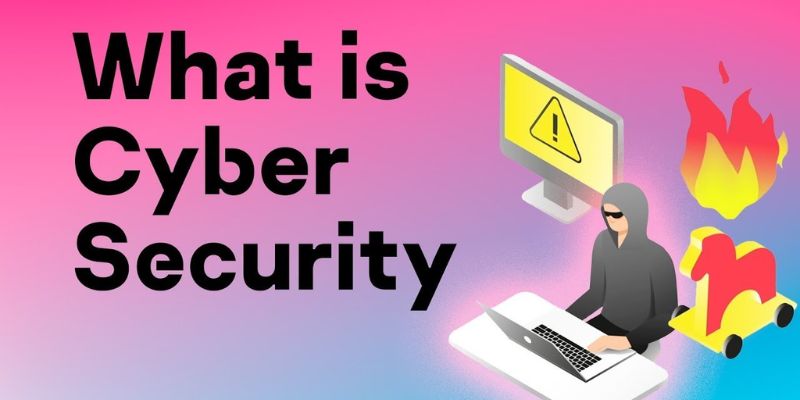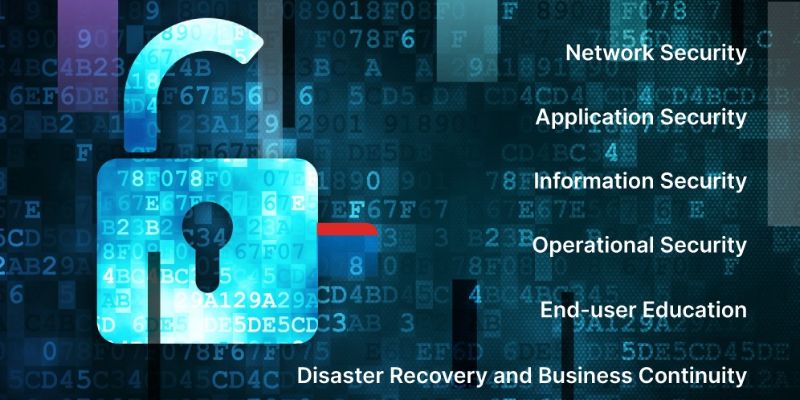
What is Cyber Security? Why is Cybersecurity Important?
Delve into the realm of online security with our comprehensive guide. In this article, we unravel the mystery behind ‘What is Cyber Security?’ and why it’s crucial in today’s interconnected digital landscape. Discover key concepts and practical tips to fortify your online defenses and navigate the virtual world with confidence.
What is Cyber Security?
What is Cyber Security? Cybersecurity involves safeguarding computers, servers, mobile devices, electronic systems, networks, and data against malicious attacks, also known as information technology security or electronic information security. This term is applicable in various contexts, spanning from business to mobile computing, and encompasses several key categories.
- Network security is the protection of a computer network from intruders, whether they are targeted attackers or opportunistic malware.
- Application security is centered on maintaining software and devices free from threats. A compromised application could potentially grant access to the data it is designed to protect. Effective security measures start in the design stage, well before the deployment of a program or device.
- Information security ensures the integrity and privacy of data, both during storage and transit.
- Operational security encompasses the processes and decisions for handling and safeguarding data assets. This includes the permissions granted to users when accessing a network and the procedures governing how and where data may be stored or shared.
- Disaster recovery and business continuity outline how an organization responds to a cybersecurity incident or any event leading to the loss of operations or data. Disaster recovery policies dictate the process of restoring operations and information to the same capacity as before the incident, while business continuity is the plan the organization relies on to continue operating without certain resources.
- End-user education addresses the most unpredictable factor in cybersecurity: people. Anyone can inadvertently introduce a virus to an otherwise secure system by neglecting good security practices. Instructing users on actions like deleting suspicious email attachments, refraining from plugging in unidentified USB drives, and imparting other essential lessons is crucial for the security of any organization.
Why is Cybersecurity Important?
In the contemporary era of technology, the significance of cybersecurity cannot be overlooked. A mere security lapse has the potential to unveil the personal details of countless individuals. Such breaches not only impose significant financial repercussions on companies but also result in the erosion of customer trust. Therefore, safeguarding against spammers and cybercriminals through cybersecurity is crucial for both businesses and individuals.
Common cybersecurity threats
Common cybersecurity threats encompass various risks to computer systems and users. Malware, which is short for “malicious software,” refers to any intentionally crafted software code or program designed to inflict harm on a computer system. Virtually all contemporary cyberattacks involve some form of malware.
Hackers and cybercriminals utilize malware to gain unauthorized entry to computer systems, seize control of them remotely, disrupt or inflict damage, or hold sensitive data hostage in exchange for significant sums of money (refer to Ransomware section below).
Ransomware is a category of malware that encrypts a victim’s data or device and threatens to maintain the encryption or take more severe actions unless a ransom is paid. In 2022, ransomware attacks constituted 17% of all cyberattacks, according to the IBM Security X-Force Threat Intelligence Index 2023. The distinguishing factor in today’s ransomware is the evolution toward double extortion attacks, demanding an additional ransom to prevent the sharing or publication of victims’ data. Some even employ triple extortion tactics, threatening to launch a distributed denial of service attack (see below) if ransoms aren’t paid.
Phishing attacks involve deceptive email, text, or voice messages that trick users into downloading malware, disclosing sensitive information, or transferring funds erroneously. While bulk phishing scams are widespread, targeting numerous recipients under the guise of reputable brands, more sophisticated schemes like spear phishing and business email compromise (BEC) focus on specific individuals or groups to pilfer valuable data or substantial amounts of money.
Insider threats arise from authorized users—employees, contractors, or business partners—who intentionally or unintentionally misuse their legitimate access, or have their accounts compromised by cybercriminals. Identifying insider threats is challenging due to their resemblance to authorized activities, and their invisibility to traditional security measures like antivirus software and firewalls.
Dispelling the myth that all cybercrime originates externally, recent studies indicate that 44% of insider threats result from malicious actors. The average cost per incident for malicious insider activities in 2022 was USD 648,062. Another study revealed that incidents involving an insider threat actor often led to the exposure of 1 billion records or more, a stark contrast to the average external threat compromising about 200 million records.
Distributed denial of service (DDoS) attacks seek to overwhelm a server, website, or network by inundating it with traffic, typically orchestrated by a botnet—a network of compromised systems controlled remotely by a cybercriminal using malware. The prevalence of DDoS attacks has surged during the COVID-19 pandemic, with attackers increasingly combining DDoS assaults with ransomware attacks or threatening DDoS strikes unless a ransom is paid.
Common (and dangerous) cybersecurity myths
Despite a continual rise in cybersecurity incidents globally and an increasing wealth of insights derived from them, some perilous misconceptions persist.
While strong passwords contribute to security, they alone are not sufficient protection. To illustrate, a 12-character password takes 62 trillion times longer to crack than a 6-character password under equal conditions. However, relying solely on passwords as a security measure for organizations or individuals is insufficient, as cybercriminals can steal them or employ insiders to do so.
The well-known cybersecurity risks are pervasive, and the risk landscape is consistently broadening. Each year witnesses the reporting of thousands of new vulnerabilities in both old and new applications and devices. Moreover, the potential for human error, particularly from negligent employees or contractors inadvertently causing data breaches, continues to rise.
The notion that all cyberattack vectors are under control is false. Cybercriminals are constantly discovering new attack vectors, encompassing Linux systems, operational technology (OT), Internet of Things (IoT) devices, and cloud environments.
The belief that certain industries are immune to cybersecurity risks is misguided. Every industry faces cybersecurity threats, with cyber adversaries exploiting communication networks across almost every government and private-sector organization. For instance, ransomware attacks have expanded to target various sectors, including local governments, non-profits, and healthcare providers. Threats to supply chains, “.gov” websites, and critical infrastructure have also surged.
Contrary to the belief that small businesses are immune, they are indeed vulnerable. In 2021, 82 percent of ransomware attacks targeted companies with fewer than 1,000 employees, and 37 percent of those attacked had fewer than 100 employees.
The scale of the cyber threat
The pace of the global cyber threat’s evolution remains swift, marked by an increasing number of data breaches annually. According to a report from RiskBased Security, an astounding 7.9 billion records were exposed in data breaches during the first nine months of 2019 alone, surpassing the previous year’s figure by 112%.
The sectors most affected by breaches were medical services, retailers, and public entities, predominantly targeted by malicious actors. Cybercriminals are drawn to these industries due to the collection of sensitive financial and medical data. However, any business utilizing networks is susceptible to cyber threats, whether for customer data, corporate espionage, or direct attacks on customers.
As the cyber threat continues to escalate, there is a natural increase in global spending on cybersecurity solutions. Gartner projects that cybersecurity spending will reach $188.3 billion in 2023 and is anticipated to exceed $260 billion globally by 2026. Governments worldwide are responding to this growing threat by providing guidance to assist organizations in implementing effective cybersecurity practices.
In the United States, the National Institute of Standards and Technology (NIST) has developed a cybersecurity framework. This framework emphasizes continuous, real-time monitoring of all electronic resources to combat the spread of malicious code and enhance early detection.
The significance of system monitoring is underscored in the “10 steps to cyber security,” guidance issued by the National Cyber Security Centre of the U.K. In Australia, The Australian Cyber Security Centre (ACSC) regularly issues guidance on countering the latest cybersecurity threats for organizations.
Conclusion
As we conclude our exploration of cyber security, remember that staying informed is the key to a safer online experience. Equip yourself with knowledge, adopt best practices, and fortify your digital fortress. Cyber security is not just a concept; it’s your shield in the evolving landscape of the digital age. Follow Solution of Blockchain to update more knowledge about technology.






